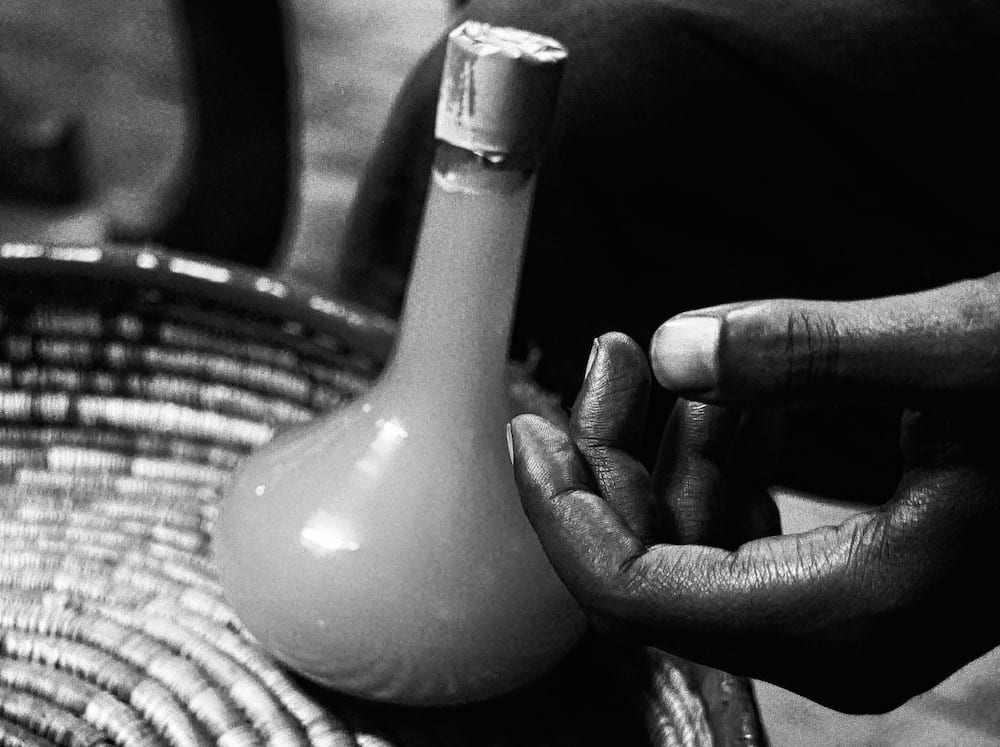Share this!
Sweet Tej: Ethiopian Honey Wine
History of Tej
Ethiopia, the only African nation that is still to be colonized, and it would probably never happen. This old county is even mentioned in the Bible. Legend has it that, Makeeda, the Queen of Sheba then known as Saba visited King Solomon and they toasted with Makeeda’s Tej. Whether this legend is true or just an old wife fable, it just helps us know how old the Tej wine has been in existence and the value it has to be offered to a great King. It is believed also that modern day Ethiopia was originated from the Kingdom of Aksum ruled by a great monarch called Yekuno Amlak in 1270AD and they drank Tej. There is much account of explorers, missionaries and historians of 16th century and beyond who confirmed the widely consumed honey wine called T’ej. T’ej simply means wine in Amharic, the official language of Ethiopia. Although popular among the different ranks of people, royal, elite, and poor alike, at that time, there was a restriction to the making and drinking of Tej and only the upper class and royalties had rights to enjoy this special wine. It was only affordable by the middle and upper class during those times. However, in the 20th century, the restriction was lifted and now everyone can make or drink Tej.

Tej, which is traditionally written as T’ej or Tedj, is a honey wine drunk by the Ethiopians for over 3000 years. It has been recorded that T’ej and honey wines is thought to be the oldest alcoholic beverage to be produced. Ethiopia being the largest honey producer in Africa with over six million wild beehives maximizes this raw material to make a mead-like wine, the only difference between the classic mead containing honey, water and yeast is the addition of leaves of a plant named gesho. Gesho scientifically called Rhamnus Prinoides is a bitter tasting plant, a species of buckthorn that is native to Africa, added to balance out the sweetness of the honey.
The Making of Tej
The difference between the regular mead and Tej is the fermentation agent, gesho. Unlike mead where yeast is used for fermentation, gesho is used for the fermentation of Tej and it gives the bitter aftertaste that is uniquely Tej’s. Gesho is sold online or from any Ethiopian store near you. In the early days, the gesho leaves were pounded and added to honey and water in a ratio of three to one of water to honey. After all the ingredients are added together, the mixture is covered and left to ferment. Tej typically takes two weeks to ferment, but can be left for up to five weeks to taste more like a potent wine. After two to three days, fuzz and fur will grow on the gesho which represents the bacteria, stir after a week, in the second week the mixture becomes effervescent and the gesho should be removed. It should be left for three weeks covered and then it can be bottled and enjoyed.
Tej of good quality has a yellow color, sweet to taste and it is cloudy and bubbly due to the presence of yeast bacteria from the gesho. The alcoholic content can range from a mere 2.7% to as high as 21% depending on how long it was left to ferment or age. Gesho are packaged in clear bags in the form of stems and sticks which also give the same taste of Tej like the pounded leaves used in ancient times. Tej is widely drunk in Tej houses both in Ethiopia and Eritrea, but you can always make yours. Berele is the traditional container used to drink Tej, it is shaped with a long neck and a rounded base designed to keep insects away from your Tej while drinking. It is also believed that the long neck of the berele keeps the wine from getting you intoxicated quickly. There is this saying and believe in Ethiopia that no two cups of Tej is the same. This statement is probably true and can be attributed to the fermentation process, the physical and chemical environment, composition of the micro-flora and a whole lot of science.

Tej, Around the World
Like most things ancient that is still present today, Tej has undergone a lot of modernization in other parts of the world where it have been appreciated. Tej has been combined with other drinks to make cocktails, which is unheard of in Ethiopia where it is drunk straight. Example of a Tej cocktail is combining Tej, vodka, and gin in different proportions created by Menkir Tamrat which he called the Yamatinni or a combination of katikala, an Ethiopian vodka, Tej and cane sugar garnished with a red pepper to keep flies at bay created by Wilma Stordiau and many more cocktails of Tej by many mixologist round the world.
The berele has been ditched for the normal wine glasses and instead of the Tej houses; you can find the modern brands of Tej in bars, supermarkets and wineries where it is produced. Some of the popular brands of Tej are Sheba Tej produced by Brotherhood winery, Washingtonville, New York, United States oldest winery, Ferenj Tej in Pittsburgh, Makeda Tej, in Mountlake, Terrace, Washington made by Ethiopians. European wineries produced Begena tedj in Frankfurt, Germany, Tej in Orebo, Sweden. Local wineries, Awash winery in Ethiopia, the home of Tej called theirs Nigest honey wine, located in Addis Ababa the nation’s capital and a major exporter to the United States all with different variations of dry, premium or sparkling Tej.

Health Benefits of Tej
In addition to the intoxicating properties of the alcohol and the good spirits it offers its lovers, Tej is a honey wine so it has the benefits of wine, raw honey and also mead, but here are some of the health benefits of Tej in its own right:
- Great for improving gut bacteria
- Provide antibiotic properties
- Contains healing properties
- Loaded with antioxidant and so can be taking as a health tonic
- Filled with infection fighting bacteria
- Help boost fertility
- Cures colds and cough
- Promote overall well being.
- May help in increasing longevity
Whatever your preference is, going to a Tej house, buying the different Tej brand available in the market or making your own jug of this Ethiopian national wine, don’t forget to make a toast the Ethiopian way, saying ‘’le tenachin’’ meaning “to our health”.
[amazon_link asins=’B01M0BINO6,B00ACO9NCU,B00GDHI0D8,157067311X,B005OMS32G,B005WDVQHG,1534775927,1884459064′ template=’ProductCarousel’ store=’dawebsite2017-20′ marketplace=’US’ link_id=’c653f86f-bda3-11e7-b523-a986adf120f0′]






